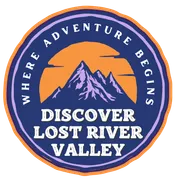Exploring the Lost River Valley
3 Days/2 Nights | Gateway: Idaho Falls, Idaho
Day One
Idaho Falls—In an area first settled by cattle and sheep ranchers, the founding of Idaho Falls coincided with the gold rush of the 1860s. A ferry across the Snake River, led the way to a log toll bridge, which enabled settlers moving north and west, and prospectors and miners seeking riches in the gold fields of Idaho and ultimately connecting to copper mining in Montana. Homesteaders from Utah brought irrigation know-how, developing a canal system fed by the Snake River. Tens of thousands of acres of desert were turned into green farmland and Idaho Falls became one of the most productive agricultural regions of the United States. The city once again made a name for itself when the Idaho National Laboratory established the National Reactor Testing Station in the region in an isolated location where various kinds of nuclear reactors were tested—52 in all.
Day Two
EBR-I Atomic Museum—Plan to drive on US 20/26 towards Arco to visit Experimental Breeder Reactor No. 1 (EBR-I). Colorful, interactive displays also tell the story of EBR-I’s sibling, Experimental Breeder Reactor No. 2 (EBR-II), which once powered much of the site and operated with a novel closed fuel cycle. The museum also has two aircraft nuclear propulsion prototypes, a reactor control room, remote handling devices for radioactive materials, radiation detection equipment, and more. You can walk through the museum using the self-guided tour instructions or take a guided tour.
Day Three
Lost River Museum—Housed in a restored century old church, the Lost River Museum showcases a variety of artifacts including mining tools, ranching equipment, vintage clothing, household utensils, railroad memorabilia, theater memorabilia, local moonshiners, and historical photographs illustrating life in the past.
Idaho's Volcanic Wonders
3 Days/2 Nights | Gateway: Hailey, Idaho
Day One
Craters of the Moon National Monument and Preserve—In 1924, President Coolidge designated the Craters of the Moon National Monument and Preserve, which spans over 1,117 square miles, to preserve what he called “the most unusual and unearthly lunar landscapes.” The preserve encompasses a unique volcanic landscape characterized by vast lava fields, cinder cones, and lava tubes that resulted from a series of volcanic eruptions when Idaho was on the edge of the Pacific Ocean about 15,000 years ago.
Day Two
Peaks to Craters Scenic Byway—As you explore the 140-mile drive through ever-changing landscapes, you can stop to explore the ghost towns of Bonanza, Custer, and Bay Horse, quaint places where residents live a timeless Western lifestyle that has not changed much in a few centuries. This gorgeous byway adventure is said to be the most diverse stretch of road in Idaho—boasting everything from sky-piercing peaks to captivating craters along its course.
Day Three
Land of the Yankee Fork State Park and Interpretive Center—Yankee Fork preserves a mining camp established on the Salmon River, named because everyone in the party was a Yankee. Even though no gold was discovered immediately, prospectors stayed on and finally found gold in 1870. Soon after, the Yankee Fork Mining District was organized, and after the discovery of the General Custer Mine in 1876, the area began to flood with miners. By 1910, the three popular sites, Bonanza, Custer, and Bayhorse, were all but deserted. The interpretive center illustrates the area's mining heritage through exhibits, a gold panning station, and audiovisual programs. The grounds also feature a ¼ mile trail detailing the archeological finds of a nearby Challis Bison Jump Site.
